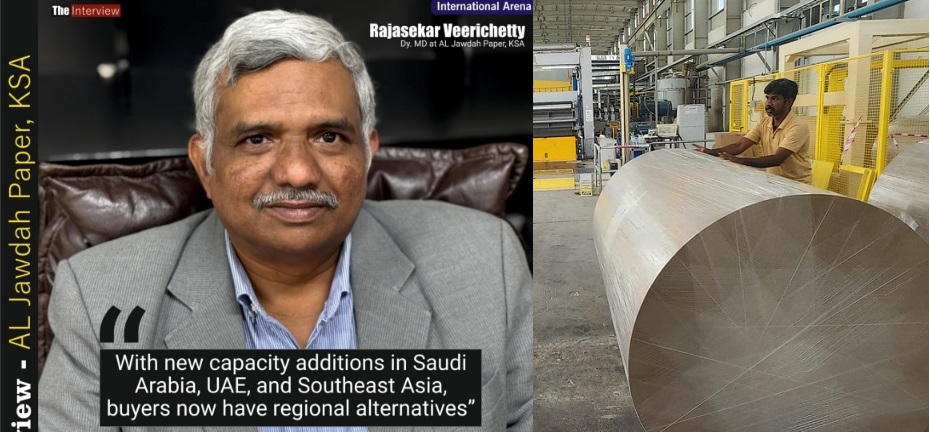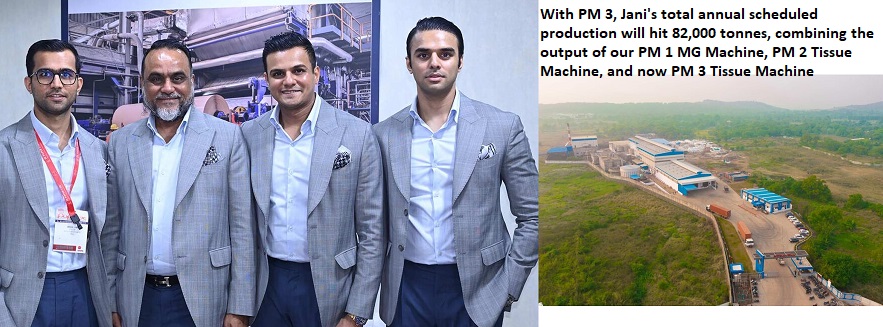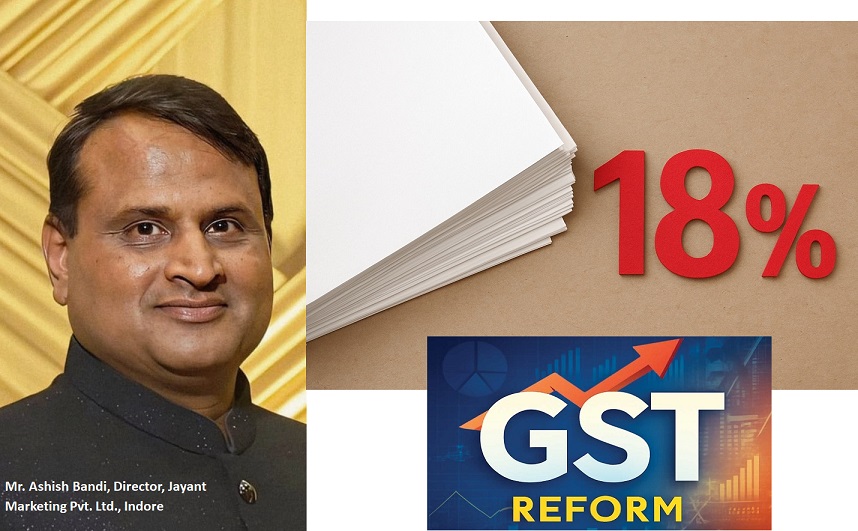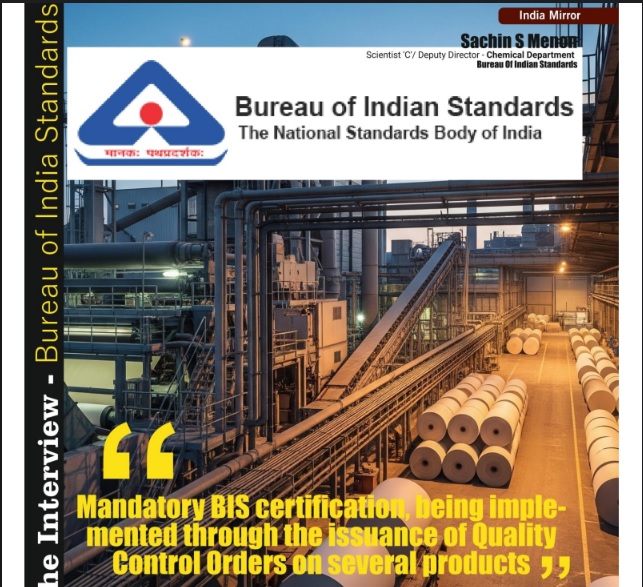Paper mills will not resort to making Kraft Paper as it is a lower realization product: FPTA


Paper mills will not resort to making Kraft Paper as it is a lower realization product: FPTA
15th January 2021 | The Pulp and Paper Times:
Recently, The Pulp and Paper Times got the opportunity to interact with 'Federation of Paper Traders Associations of India' (FPTA)'s Designate- President, Mr. Deepak Mittal. Discussion is about the present pandemic conditions, Traders Problems, and various other issues. Here is his full interview:
Q. As a president of FPTA, what are your old objectives which have been achieved and what are new objectives which have to be achieved in the coming time.
FPTA is the August body of the Paper Traders of India. It is represented by 35 Affiliated Associations and has a total member strength of approximately 6000 +. Together the trade has a turnover of approx. 60000 to 65000 Crores. The trade has been facing quite a few challenges like long unsecured credits, wafer thin margins and low growth. The nature of the paper trade in India is quite fragmented unlike some of the overseas market where limited number of Traders cater to the requirements of the entire market. Hence, keeping this in mind, the margins are not adequate enough to cover the cost of operations and also to cover the risk of long unsecured credits that the trade extends to its customers.
It is about time that the Trade, the Industry and the Consumers recognize this pain point of the Paper Trade as it is essential for the entire chain that we Traders remain healthy and profitable in order to re-invest to cater to the growing needs of the market.
Q: Recently, The government of India has come out with norms for the enforcement of 'rules of origin' provisions for allowing the preferential rate of customs duties on products imported under free trade agreements. The primary aim of such a policy is to stop the unauthorized benefits and claims of Customs benefit under the respective Trade Agreements like FTA / PTA / CECA / CEPA). How do you evaluate this kind of imposition particularly for paper trade? Will this rule be beneficial to the paper industry and paper trading business?
This “Rules of Origin†provision by the Government of India is kind of a Non-Tariff barrier to check the unauthorized imports into India. This is definitely good for Industry and Trade in the long run as the 0% Import Duty Rule should not be misused and create unnecessary distortion in the Indian Market.
This Rule has been imposed by the Government for lot of Industries where probably misuse was rampant. But in the Paper Products, such instances have been very less. But what this has done is that it has created lot of hassles in the import clearing procedure which is leading to considerable delay in clearing the consignment from the ports and thereby increasing the cost of imported goods. I feel the Government should ensure that the imports should be hassle-free and not lead to any hardship and cost escalation for the importers. This rule is definitely good for the long term but there would be some short-term pain for the Traders who are importing from FTA Countries.

Q: What is the future of global paper trade under COVID-19?
The demand for Paper and Paper Board took a beating during the Covid-19 pandemic break out and it is estimated that the drop in demand globally will be approximately 12 – 15% in 2020. But since then with the drop in Covid-19 cases and introduction of vaccines in most parts of the world, it is expected that the Paper demand will bounce back sharply in 2021 by more than 15% globally thereby making up for the losses and more of the year 2020. As we speak, there is a V-shape recovery both in the demand as well as prices and in the next few years looks extremely strong especially for India since we are one of the fastest growing countries in the world where our paper demand is projected to grow by 5 – 6% annually over next few years. One of the reasons of sustained growth in India is our Per-Capita consumption is only 12 Kgs against the global average of approximately 45 Kgs.
Q: Covid pandemic has dropped the import of paper drastically, Do you think this an advantage or not? And how a paper trader is handling this situation?
Import of paper came down drastically during the Covid period as the demand shrinked drastically in April and May as consumers were uncertain about the situation. This event was a one in hundred years kind of an event. Prices crashed significantly by as much as 25 – 30% and importers lost lot of money due to this. This situation in my opinion is temporary and the imports will go up again as we do not have adequate capacity in the domestic market to cater to the needs of the domestic demand. For example – in Coated Papers, the demand is close to one million tons / annum and the production is only about 4 lakh tons / annum. Hence when the demand normalizes, imports have to come to bridge the demand supply gap. Similar is the situation in the Uncoated Papers. The import trader has borne the brunt of this crash in demand and prices and it has impacted his confidence to a large extent. Some of them have tried to buy locally produced goods and service their customers in order to maintain continuity. But my feeling is once demand normalizes, the imports will be back to pre-Covid levels and the stronger and bigger importers will come back to the usual level of business.

Q: In terms of Quality and Price, how do you differentiate between imported paper and Indian made paper?
In terms of quality, definitely the quality of most grades of imported paper is superior primarily due to better quality of fiber that is used by the international Mills especially those from the West. On certain grades of paper, a few mills in India are on par with some of the international Mills in terms of quality. In terms of prices in the current context, imported material is more expensive due to sharp uptick in prices in international markets which is a result of a V shaped recovery in demand and also due to rise in pulp prices.
Q: With the ban on imported waste paper in China effective from January 2021, How world is going to be affected by this major shift?
China has imposed a complete ban on mixed waste paper with effect from January 2021 in order to control the pollution levels created by the mixed waste grades of paper. China is one of the largest buyers of waste paper from the world and this will definitely have far reaching consequences. One on the prices of mixed waste paper and secondly how the world (they buy 40-50% of waste paper and market pulp of the world) will dispose this waste as most countries including India will eventually follow suite of banning import of mixed waste to avoid such poor quality consignment coming into their country.
This will definitely lead to a surge in demand for pulp based products and will eventually lead to surge in prices of virgin grade Paper and Paper Board. This will lead to short term benefits for countries like India who will probably get this mixed waste grades at cheaper prices and will also have increased demand of finished products made out of mixed waste from countries like China. This is already happening as we are seeing large scale exports of Kraft and Duplex Board from India to China.
Q: Do you think Ready-made Pulp market will emerge in India? And more and more Paper mills will engage in pulp manufacturing exporting it to China? How long will this trend survive?
By ready-made pulp, I am assuming you are referring to recycled pulp. Lot of Indian Mills based on recycled fiber have started exporting recycled pulp from India to China especially from the west part of India that is Vapi, Morbi etc. since China cannot import mixed waste directly. These mills import the mixed waste, convert it into ready-made pulp rolls and export the same to China for conversion in their paper mills. This trend will continue as long as Indian Government allows mixed waste to be imported into India. Small to medium mills will engage in this activity to make pulp and export the same. Large mills would prefer to make the finished products and export it to China as China is moving to Nett Importer of Paper from Nett Exporter of Paper.

Q: Indian paper industry is suffering major losses on account of Writing & Printing, Big paper mills are shifting their production line to kraft paper manufacturing. How do you evaluate this scenario?
Indian Paper Industry suffered huge losses both on account of demand destruction and price destruction during the Covid period. Due to closure of the educational institutions (They are the biggest consumers of the writing and printing paper), there was no demand for writing and printing paper especially for the uncoated papers. To beat the slow down during this period, mills converted their facilities from writing and printing grades to that of kraft paper as the demand for packaging grades during this period was intact and did not suffer much. Also, during this period, the demand for News Print Paper collapsed by 30 – 40% and the mills did not have the option of making News Print either. But this scenario is temporary as the demand has started coming back and the indication is that the schools and colleges will re-open from the next academic year and the demand for writing and printing paper will come back to pre-covid levels very very shortly. Further, we are also seeing V-shape recovery in the prices of writing and printing paper. Hence, mills will not resort to making Kraft Paper as it is a lower realization product.
Also, there is a huge surge in prices of paper in international markets. In case in the short term demand does not recover in India, Mills will take the export route to cover their machines.
Q: Anti-Chinese sentiment across the globe will generate a vacuum for the Non-China made Printing & Publishing Paper. Globally customers are willing to look at paper products from other Countries even if it means at a slightly higher premium, How Indian paper industry explores this opportunity?

Post Covid – 19 episode, there was an anti-China sentiment across the globe for any product that was manufactured by China especially by countries in the West. Lot of Companies based in US and Europe who had manufacturing bases in China are seriously re-thinking on their policy of having too much of production capacity in China. Lot of paper mills in China are also planning to set up bases in India for the Indian market as well as to make the production capacity over here as their export hub to other parts of the world. This will lead to a huge opportunity for India to attract this investment and make India as one of the large production base for paper and paper board. At present, India contributes to only to 4.5% of the global pulp and paper market in-spite of having close to 16% of world population.
Q: What demand projection do you see in WP, Coated & food free uncoated paper and Packaging paper in next two years?
The total demand for paper and paper boards is approximately 18.2 million tons in India and the break-up for the same is as under :
Kraft Paper – 7.5 Million Tons
Packaging Board – 3.5 Million Tons
Writing and Printing Paper – 5.1 Million Tons
Newsprint – 1.6 Million Tons
Specialties – 0.5 Million Tons
On average, the Indian Paper and Paper Board market is expected to grow by 5 – 6% per annum over next few years. The growth rates for Packaging Segments is expected to be around 7.5 – 8% and for the Uncoated Writing and Printing Segment it is expected at 3 – 4%. For the Coated Wood Free Paper, it is estimated at 6 – 7% per annum.
Q: In the recent past, we see the backward integration of some paper trade houses, they have set up paper mills. What factors do you evaluate a hidden continuous demand or a larger margin to play?
As explained earlier, lot of paper traders have been under pressure due to long credits, wafer-thin margins etc. which has lead them to think about diversifying their business from paper trading into setting up a paper mill. These traders have in-depth knowledge of their markets in which they operate. Some paper traders have got into the paper manufacturing side mainly into Re-cycled varieties like Kraft Paper, Duplex Board etc. wherein they have set up the mills in their area of operation and are able to sell the same also in and around their main core markets. None of the traders have ventured into large integrated mills as that requires a definite skill set, large-scale investment which the traders have not been able to generate.
This exercise/experiment of exporting has been tried out by a handful of traders and if they taste success, I am sure lot of other traders may take a similar route.

Web Title: Paper mills will not resort to making Kraft Paper as it is a lower realization product FPTA





 Join WhatsApp Group
Join WhatsApp Group Join Telegram Channel
Join Telegram Channel Join YouTube Channel
Join YouTube Channel Join Job Channel (View | Submit Jobs)
Join Job Channel (View | Submit Jobs) Join Buy Sell Channel (Free to Submit)
Join Buy Sell Channel (Free to Submit) Paper News Headlines Channel (Free to read)
Paper News Headlines Channel (Free to read)










